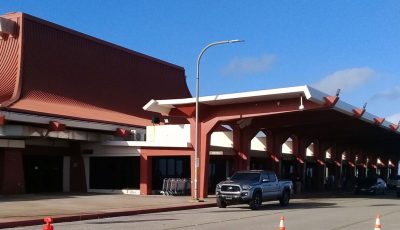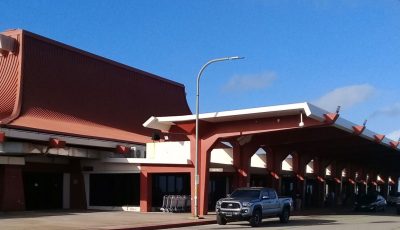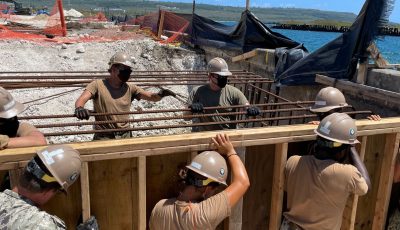USAF aims to sell divert plan anew
Reduced scope’ to be highlighted in October’s EIS
The U.S. Air Force aims to renew talks for a divert airfield on Saipan despite a local ports authority resolution opposing one on the island, as Air Force officials believe the new set of facts contained in a revised environmental impact statement due next month will put forth new and attractive alternatives for the CNMI’s consideration.
Over a year ago, the Commonwealth Ports Authority rejected the siting of the Air Force’s divert project on Saipan, endorsing Tinian instead, and asserting that they would not support an “airport layout plan” for the Saipan airport inclusive of divert activities.
Since CPA owns the property, the Air Force needs the port authority to submit an ALP for the Federal Aviation Administration’s approval. CPA also would have to lease to the military required lands for the divert project.
These facts, or limiting factors, put the onus on the Air Force to be as collaborative and open with their plans as they move forward with a revised project that the U.S. Environmental Protection Agency earlier rated as “insufficient” for “severe” noise impacts, among others.
Col. Michael R. Cardoza, USAF Chief of Strategy and Plans Division, said the feedback from the CNMI resulted in a “reduced scope they will see in the revised EIS.”
This revised EIS is set for release in October—about seven months after U.S. Department of Defense officials introduced among CNMI leaders last February a “hybrid” plan to have the divert airfield on both Tinian and Saipan. That “hybrid” plan came about five months after the CPA resolution and assured a “de-confliction” with civil and military activity.
“We think the CPA will find the new alternatives to be attractive options that represent a true middle ground between the initial positions of both parties,” said Cardoza in an email yesterday.
“The Air Force has made significant reductions to the scope of the initiative, in an attempt to mitigate potential impacts of the original proposal. Fighter aircraft and their associated munitions have been completely eliminated. This means the only remaining aircraft are refueling and mobility aircraft, which are similar to the commercial airlines flying into Saipan today,” Cardoza said.
“Also, expected planned exercise flights have been reduced by more than 60 percent. Most importantly, we have developed a hybrid option that distributes operations between the two alternative locations, minimizing the impacts to Saipan and locating the majority of development on Tinian, a desire expressed by the CPA board and other stakeholders.”
Air Force officials have said “noise contour levels would shrink considerably” in the new proposal, as there are no longer plans for fighter activity. The Air Force would instead fly tanker aircraft.
In his email, Cardoza emphasized that the EIS is not a decision-making document. That would be the “Record of Decision” signed by the Secretary of the Air Force.
“We will continue to analyze the alternatives to inform that decision. While the CPA resolution does not prevent us from completing our revised EIS, it will need to be re-addressed at the appropriate time with the CPA board. We look forward to working in a cooperative manner to find a solution that is acceptable to all parties.”
“As we progress, our desire is to be open, transparent, and responsive,” he added.
In a interview yesterday, Rep. Joseph “Leepan” Guerrero (R-Saipan), who chairs the House Committee on Commerce and Tourism, expressed concern that the reduced scope of operations could be expanded on at a later date.
Saipan Tribune learned that this could be done in a supplemental EIS, after the initial project is improved. Also, DoD projects in the CNMI have expanded in other EIS’s for live-fire and undersea sonar training, years after earlier and separate EIS approved smaller training.
“The need for military presence here within this region is of vital importance,” Guerrero said, “[but] we want assurance from the military that when you say this…you don’t mean something else. C-130 aircraft are going to be stationed here and no jets. If you want jets, then let’s come to the table and let’s talk about jets.
“…You said training was at this hour, make sure it’s that hour, that there is no extended hours, and no special training that is not on the agenda.
“Let’s not make some changes drastically,” Guerrero said.



























